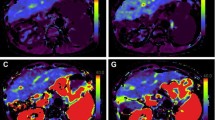Summary
Using an experimental animal model consequences of operatively changed modes of liver perfusion on hepatic function could be demonstrated. Three groups of 5 animals each (swine) had the following operations: Group I received a portocaval shunt. In group II in addition to the portocaval shunt a vein graft was interposed between the vena cava and the portal vein. In group III an arterialization of this graft was performed in addition to the two operations mentioned above. Follow-up at defined time intervals included clinical, laboratory and histological data. It could be demonstrated that animals in group II and III showed normal parameters as far as behavior and controlled lab data are concerned. Animals of group I had significantly poorer results in all tests. In this study we found that direct portal perfusion was not necessary for a normal liver function and could be fully compensated both by caval venous blood and by arterialized caval venous blood.
Zusammenfassung
Anhand eines tierexperimentellen Modells werden die Folgen operativ veränderter Perfusionsbedingungen auf die Leberfunktion aufgezeigt. Drei Gruppen mit je 5 Versuchstieren (deutsches Hausschwein) werden folgenden Operationen unterzogen: Gruppe 1 erhielt einen portokavalen Shunt. Zusätzlich zu einem portokavalen Shunt wurde Gruppe 2 mit einem venösen Interponat zwischen V cava und Pfortaderstumpf versehen. Bei den Tieren der Gruppe 3 wurde neben den beiden genannten Operationen noch eine Arterialisation des Interponats durchgeführt. Im Verlauf wurden zu definierten Zeitpunkten klinische, laborchemische und histologische Daten erfaßt. Die Tiere der Gruppen 2 und 3 wiesen im Verhalten and ebenfalls hinsichtlich aller erhobener Leberfunktionsparameter normale Werte auf. Die Tiere der Gruppe 1 zeigten in allen genannten Funktionen erheblich schlechtere Ergebnisse. In dieser Arbeit konnte demonstriert werden, daß fur eine normale Leberfunktion die direkte portale Perfusion entbehrlich ist und letztere durch kavalvenöses bzw. arterialisiertes kavalvenoses Blut voll kompensiert werden kann.
Similar content being viewed by others
Literatur
Bucher NLR, Swaffield MN (1973) Regeneration of liver in rats in the absence of portal splanchnic organs and a portal blood supply. Cancer Res 33:3189–3194
Child CG, Burr D, Holswade GR, Harrison CS (1953) Liver regeneration following porta caval transposition in dogs. Ann Surg 138:600–608
Cohn R, Herrod C (1952) Some effects upon the liver of complete arterialization of its blood supply. Surgery 32:214
Cuschieri A, Baker PR, Holley MP, Hanson C (1974) Portacaval shunt in the pig. 1. Effect on survival, behavior, nutrition, and liver function. J Surg Res 17:387–396
Eck NV (1877) Voprosu o perevyazkie vorotnois veni: Predvaritelnoye soobschjenye. Voen Med Zh 130:1–2
Ennker IC, Hauss J, Nagel E, Luciano L, Reiss G, Pichlmayr R (1989) Morphologische und funktionelle Veränderungen der Leber im Rahmen verschiedener portocavaler Bypass-Operationen. Langenbecks Arch Chir [Suppl] II: 1061
Fischer B, Russ C, Updegraff H, Fisher ER (1954) Effect of increased hepatic blood flow upon liver regeneration. Arch Surg 69:263–266
Fisher B, Szuch P, Levine M, Saffer E, Fisher ER (1973) The intestine as a source of a portal blood factor responsible for liver regeneration. Surg Gynecol Obstet 137:210–214
Fritsch A, Funuvics J, Gangl A, Horak W, Grabner G, Kohn P (1974) Die kontrollierte Arterialisation der Leber. II Klinische Ergebnisse. Langenbecks Arch Chir 336:67–89
Hahn M, Masse O, Nencki M, Pawlow J (1893) Die Eck'sche Fistel zwischen der unteren Hohlvene und der Pfortader und ihre Folgen für den Organismus. Arch Exp Pathol Pharmakol 32:161–210
Kuntz HD, Schregel W (1990) Indocyaningreen: evaluation of liver function — application in critical care medicine. In: Lewis FR, Pfeiffer UJ (Hrsg) Practical application of fiberoptics in critical care monitoring. Springer, Berlin Heidelberg New York Tokyo, S57–62
Mann FC (1940) The portal circulation and restoration of the liver after partial removal. Surgery 8:225–238
Matzander U (1968) Probleme bei der Arterialisation des intrahepatischen Pfortaderkreislaufs nach portocavalen Anastomosen. Arch Klin Chir 322:1155
Matzander U (1974) Methode und Technik der druckadaptierten Leberarterialisation mit portocavaler Anastomose. Chirurg 45:226–231
Mito M, Ebata H, Kusano M, Onishi T, Nozawa M (1981) Is a portal venous blood essential for liver cell growth and proliferation? Eur Surg Res 13:47–52
Paumgartner G (1975) The handling of indocyanine green by the liver. Schweiz Med Wochenschr [Suppl] 105:1–30
Pichlmayr R, Bockhorn WH, Neuhaus P (1983) Lebertransplantation. In: Gschnitzer F, Kern E, Schweiberer L (Hrsg) Chirurgische Operationslehre VI, Ergänzung. Urban Schwarzenberg, S1-S19
Pichlmayr R,Gubernatis G, Grosse H, Seitz W, Mauz S, Ennker IC, Mei M, Klempnauer J, Hauss J, Kuse ER (1989) Lebertransplantation bei niedrigem Pfortaderfluß: Separation beider Pfortaderbereiche mit getrennter portal-venöser und arterialisiert-kaval-venöser Leberperfusion. Langenbecks Arch Chir 374:232–239
Rous P, Larimore LD (1928) Relation of the portal blood to liver maintenance: a demonstration of liver atrophy conditional on compensation. J Exp Med 31:609–632
Rozga J, Jeppsson B, Bengmark S (1985) Hepatotrophic factors in liver growth and atrophy. Br J Exp Pathol 66:69–678
Rozga J, Jeppsson B, Bengmark S (1986) Hepatotrophic effect of portal blood during hepatic arterial recirculation. Eur Surg Res 18:302–311
Starzl TE, Francavilla A, Malgrimson CG, Francavilla RF, Porter KA, Brown TH, Putnam CW (1974) The origin, hormonal nature and action of hepatotrophic substances in portal venous blood. Surg Gynecol Obstet 137:179
Author information
Authors and Affiliations
Additional information
Ausgezeichnet mit dem Posterpreis der Deutschen Gesellschaft fur Chirurgie 1990
Rights and permissions
About this article
Cite this article
Ennker, I.C., Mei, M., Nagel, E. et al. Veränderungen der leberfunktion und -morphologie nach anlage verschiedener portokavaler bypassoperationen. Langenbecks Arch Chir 377, 144–151 (1992). https://doi.org/10.1007/BF00184371
Received:
Issue Date:
DOI: https://doi.org/10.1007/BF00184371




